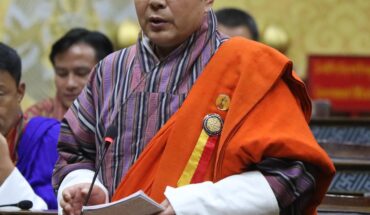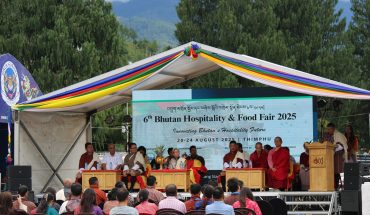The NSB survey also estimates Bhutan’s total household population at 592,598 people

KINZANG DORJI TSHERING
Thimphu
he National Statistics Bureau (NSB) has released the first-ever Household Consumption and Expenditure Survey 2025 (HCES 2025), offering a clear and comprehensive look into how Bhutanese people spend and live.
This detailed survey includes information on food and non-food consumption, housing, household sizes, and many other aspects of daily life.
With support from the Asian Development Bank and collaboration from various government agencies, the report is expected to play a vital role in Bhutan’s national planning, especially for the upcoming 13th Five Year Plan.
The survey was conducted using a nationally representative sample. A total of 5,883 households responded to the questionnaire, representing about 592,598 individuals from across Bhutan.
The survey covered all 20 dzongkhags and thromdes, with findings designed to help in measuring private consumption’s contribution to Gross Domestic Product (GDP) and improve the calculation of the Consumer Price Index (CPI).
According to the report, Bhutan’s total household population is estimated at 592,598 people, spread across 159,808 households. Of these, 69.9% reside in rural areas while the remaining 30.1% are in urban areas.
On average, each household in Bhutan has 3.7 members. The household size varies across the country — Gasa and Pemagatshel have smaller household sizes averaging 3.3 persons, while Trongsa has the highest with 4.5 persons.
Among thromdes, Thimphu Thromde has the highest average household size at 3.8, and Samdrup Jongkhar Thromde has the lowest at 3.4.
About 66.3% of households in Bhutan are headed by men, while 33.7% are headed by women. This pattern is seen both in urban and rural areas.
However, some dzongkhags such as Bumthang, Lhuentse, Dagana, and Punakha report a higher number of female-headed households, with Bumthang showing the highest at 50.9%.
The data also shows that urban household heads are generally younger, with a median age of 39, compared to rural household heads who have a median age of 49.
Across both urban and rural settings, male household heads tend to be older than female heads.
The country’s overall population has a median age of 32 years. A large number of people fall in the younger age group, especially in the 10–14 and 15–19 brackets, followed by those aged 30–34.
A decrease in population is observed from the 40–44 age group onwards. The sex ratio at the national level stands at 97 males per 100 females, showing that there are slightly more females in the population.
Among children aged 0–14, the sex ratio is 106 males per 100 females. For working-age adults (15–64), it drops to 93 and for the elderly aged 65 and above, it rises again to 106.
Marriage statistics show that 61.9% of Bhutanese adults are currently married. About 9.1% are widowed, 1.9% are divorced, and 8.4% have never been married.
Approximately 19.1% are in a cohabiting relationship without formal marriage. On average, married men are slightly older (47 years) than married women (44 years).
In terms of housing, the survey shows that 82.7% of Bhutanese households live in standalone houses. The rest live in separate apartments, shared housing units, or alternate dwellings.
In rural areas, about 90.3% of households live in standalone houses, while in urban areas the figure is lower at 65.2%, reflecting more apartments and shared housing in urban centres.
When it comes to home ownership, 65.9% of all Bhutanese households own the houses they live in. The ownership rate in rural areas is very high at 84.7%, while in urban areas it is only 38.8%.
Among dzongkhags, Lhuentse has the highest home ownership rate at 88.7%, followed by Dagana and Samdrup Jongkhar. In contrast, Thimphu and Paro have the lowest rates, with 38.2% and 44.3% respectively.
Among thromdes, Phuentsholing Thromde has the lowest rate at 17.3%, while Gelephu Thromde has the highest at 51.4%.
The materials used for building houses differ across regions. The most common construction material for external walls is stone with mud, followed by stone with cement, and brick or cement blocks.
In urban areas, brick and cement blocks are more widely used, while in rural areas stone and mud remain dominant. For roofing, corrugated galvanized iron (CGI) sheets are the most common material, used in about 72.6% of households.
Electricity is the main source of lighting for more than 99% of Bhutanese households. In terms of cooking, 62.3% use liquefied petroleum gas (LPG), followed by 35.7% using electricity and 26.2% using firewood.
In urban areas, LPG is used by about 90% of households, while in rural areas firewood is still used by 37.4% of households.
The survey provides detailed information about household expenditure. On average, Bhutanese households spend Nu. 16,066 per month. Urban households spend more (Nu. 18,374) compared to rural households (Nu. 13,750).
Nationally, 59% of this monthly expenditure goes towards non-food items and 41% towards food.
Within food expenditure, cereals, vegetables, meat, and dairy products make up the largest share. Urban households spend more on packaged and processed foods, while rural households rely more on locally grown cereals, vegetables, and meat.
In terms of cereals, rice is the most consumed item nationwide. Rural households tend to consume more maize and other locally available grains compared to urban households.
Among non-food expenses, major spending areas include housing (including rent and maintenance), transportation, communication, health, and education.
Urban areas spend more on communication services and modern amenities, while rural areas spend relatively more on transportation and agriculture-related items.
Looking at expenditure by wealth, the richest 20% of households spend about 2.6 times more than the poorest 20%. This indicates that income and consumption inequality exists and remains a concern.
For instance, the wealthiest households in urban areas have significantly higher spending on goods and services such as private education, restaurants, recreation, and internet services, while poorer households spend mostly on essential needs like food, shelter, and transportation.
At the dzongkhag and thromde level, Thimphu Thromde has the highest average per capita monthly expenditure, followed by Paro and Gelephu. In contrast, dzongkhags like Zhemgang and Gasa report the lowest spending levels.
This reflects a gap in income and access to services between urban and remote rural regions. Households in Thimphu, Phuentsholing, and Paro spend more on digital services, personal care, and modern housing, while those in dzongkhags like Gasa, Zhemgang, and Lhuentse focus their expenditure on agricultural tools, firewood, and essential commodities.
The survey also shows that a large portion of Bhutanese households, especially in rural areas, continue to rely on non-monetary means for consumption. Bartering, self-production, and community-based sharing are common ways of meeting household needs in these areas.
Highlighting the significance of the survey, the Director General of the National Statistics Bureau Sonam Tenzin stated, “Aligned with the government’s aspiration to achieve high-income GNH economy status by 2034, the demand for robust, reliable data for informed decision-making and effective policy development has never been greater.”
He said the HCES 2025 aims to meet this need by providing essential household-level consumption data to support economic planning, social policy formulation, and poverty reduction strategies.
The National Statistics Bureau has committed to continuing such surveys in future to track changes over time. With Bhutan aiming to become a high-income country by 2034, such information is important for building policies that benefit everyone, especially those in remote and underserved communities.
This report will help policy makers, planners, and agencies to better understand how Bhutanese households live, what they consume, and where support is needed most.





